Project Overview
At the Swansea University Fish Tracking Team, we use acoustic tags and passive acoustic tracking to study the in- river and marine movements of various fish species in the Bristol Channel, including salmonids, twaite shad, rays (thornback, spotted, small-eye, blonde), herring, and spurdog. Additionally, we have used genetic tools to examine herring population structure and migrations in the South-West Approaches, as well as the Celtic and Irish Seas.
Our acoustic telemetry studies involve tagging fish with acoustic tags, which are detected by an array of over 100 receivers deployed throughout the Bristol Channel, and in several rivers (the Tawe, Tywi and Wye) whose estuaries are on the north coast of the Bristol Channel. Since 2019, in collaboration with our partners, we have tagged and tracked more than 900 fish from nine species, and this work continues. Our database now holds over 1.2 million detections. We can use this data to understand migration patterns, survival rates and feeding patterns (through variation in water depth) both in-river and in the marine environment, and to explore species-specific preferences for different marine regions.
Our genetic studies of Atlantic herring have included genotyping more than 7,000 individual fish from all the major populations to the west of the UK, as well as mixed samples from the Irish Sea. These fish have been genotyped for approximately 3,500 SNP markers, resulting in a database that can accurately resolve and assign mixed samples to major natal population groups.
Overall, our work provides crucial evidence that can underpin fishery management decision-making and policydevelopment, as well as regulatory decision-making concerning developments such as marine renewables, and major marine developments, including the abstraction for the new nuclear power station at Hinkley Point C
